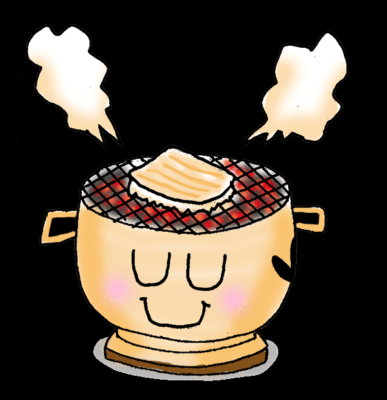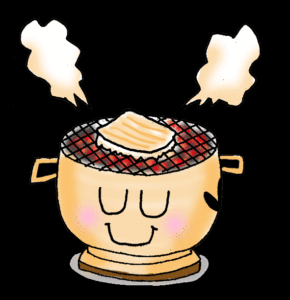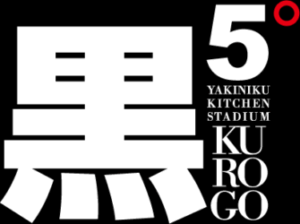When enjoying yakiniku in Japan, most people focus on the quality of the meat or the sauce, but the true heart of yakiniku lies in the fire. There are two main types of heat sources: charcoal grills and gas roasters. Both can cook meat deliciously, but the flavor, aroma, and dining experience differ dramatically. In addition, the introduction of smokeless roasters in recent years has completely changed the comfort level of yakiniku dining.
In this article, we’ll explore the differences between charcoal and gas grills, the mechanisms behind smokeless roasters, and the unique approach of KURO5, one of Tokyo’s most distinctive yakiniku restaurants.
Characteristics of Charcoal Grilling
The greatest strength of charcoal grilling lies in its high heat and far-infrared effect. Charcoal reaches temperatures over 800°C, and the radiant heat cooks the surface quickly while keeping the inside juicy. This creates a beautiful sear and locks in the meat’s natural flavor.
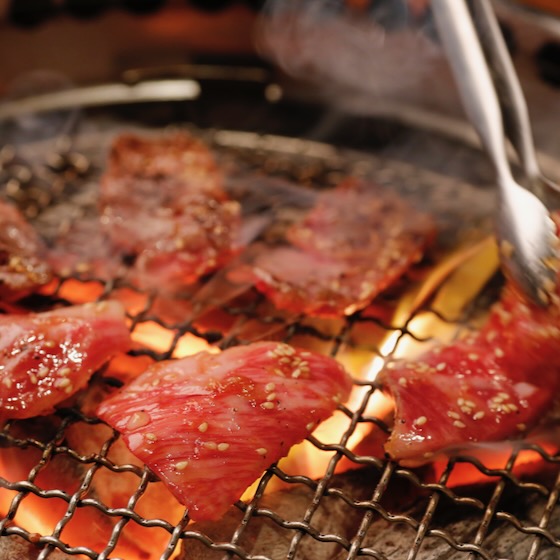
As the fat drips onto the charcoal, it turns into a thin smoke that wraps around the meat, adding a subtle smoky aroma — a flavor that gas flames can’t easily replicate. The glowing red coals, the sizzling sound, and the aroma together create a truly multisensory experience.
Characteristics of Gas Roasters
Gas roasters, on the other hand, are loved for their stability and convenience. They ignite instantly, maintain even heat, and don’t require charcoal preparation. This makes them ideal for busy restaurants that need to serve many customers efficiently.
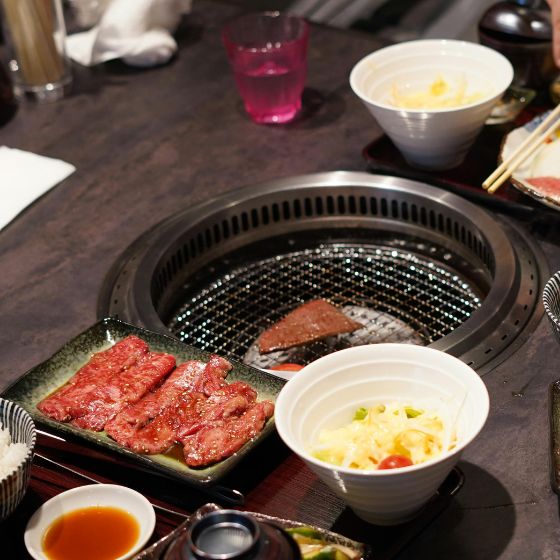
They’re also easier to clean and safer to manage, especially in urban indoor locations where ventilation is limited. However, gas doesn’t produce the same smoky aroma as charcoal — the flavor tends to be cleaner and more direct, focusing on the meat itself rather than the fire.
How Smokeless Roasters Work
Many diners think gas roasters produce less smoke or odor, but in reality, the key difference lies in the type of smokeless roaster installed, not in the heat source.
1. Down-Draft Type
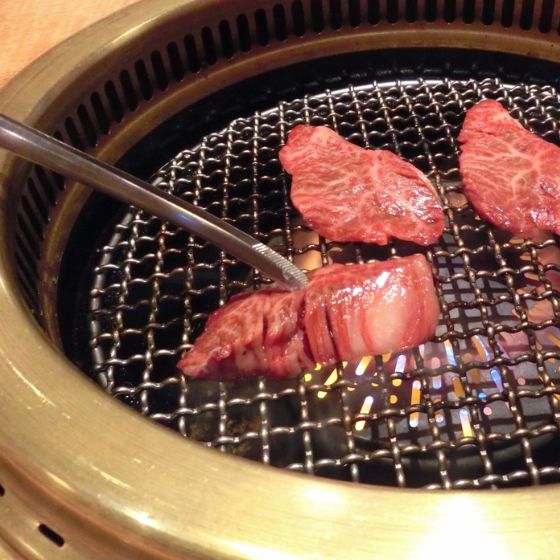
This system has actually existed for over 30 years and is the mainstream style in Japan. It powerfully sucks smoke downward before it rises, preventing odor from sticking to clothes or hair. Although installation costs are high, the comfort and cleanliness are exceptional, making it the preferred option in premium yakiniku restaurants.
2. Overhead Duct Type (Tabletop Gas Roaster)
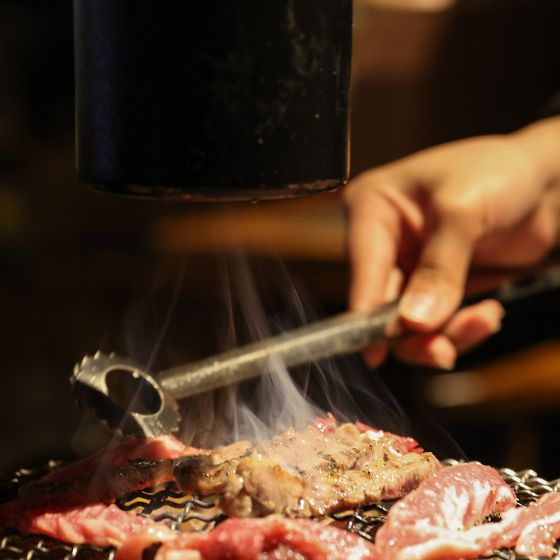
In the past decade, more restaurants have adopted a tabletop gas roaster combined with an overhead duct. It’s inexpensive and easy to install, but the suction noise can be loud, sometimes even pulling away the customers’ voices. The ducts can also block the view of your dining partner and make the atmosphere feel less intimate.
KURO5’s Innovation: Binchotan Charcoal × Down-Draft System
One restaurant that has redefined the yakiniku experience is KURO5, located in Ikebukuro and Kabukicho, Tokyo. KURO5 is known for serving rare cuts of wagyu beef at reasonable prices, all carefully grilled by staff in their signature “Yaki Bugyō” (Grill Master) style, where each piece is perfectly cooked on your behalf.
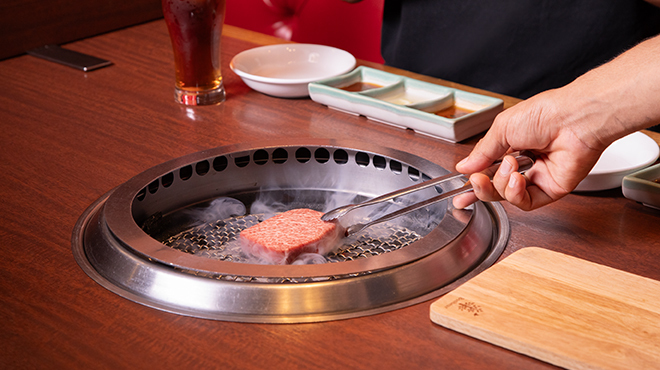
The first KURO5 restaurant originally used a traditional combination of charcoal grilling with an overhead duct. While it produced an authentic aroma, the noise and air suction often disturbed conversation. To solve this, KURO5 boldly introduced a new setup — Binchotan charcoal with a down-draft smokeless roaster.

At the time, using Binchotan (Japan’s finest white charcoal) in a down-draft system was almost unheard of. Most restaurants using down-draft systems relied on compressed sawdust charcoal, which burns with lower heat and is easier to control. Binchotan burns extremely hot and is difficult to handle, which is why few dared to try it.
However, KURO5 took on the challenge. The goal was to preserve the deep, natural flavor of Binchotan while allowing guests to dine comfortably and enjoy conversation without smoke or noise.
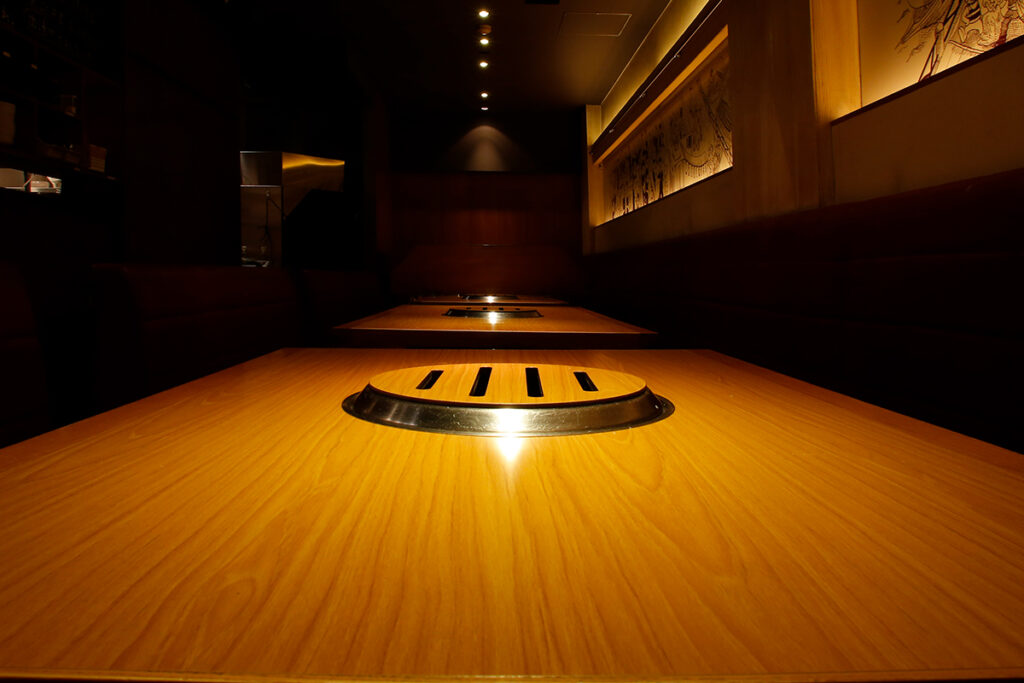
This was made possible by KURO5’s “Yaki Bugyō” system. Since staff members handle the grilling themselves, they can control the intense heat of Binchotan with expert precision. In self-service yakiniku, where customers grill their own meat, such high temperatures would make it nearly impossible — the heat would be too strong to handle from above. But at KURO5, the staff’s skill makes it achievable, offering guests both the pure taste of Binchotan-grilled meat and a smoke-free, quiet environment.
In other words, KURO5’s Binchotan × Down-Draft system is not just about equipment — it’s an experience made possible only through professional craftsmanship and a passion for perfect yakiniku.
Summary
- Charcoal grilling delivers aroma, searing, and juicy texture through far-infrared heat.
- Gas roasters offer stability, safety, and efficiency — ideal for fast-paced service.
- Smoke and odor control depend on the smokeless roaster system, not the fuel source.
- Down-draft systems offer superior comfort but come with higher installation costs.
- KURO5’s Binchotan × Down-Draft × Grill Master Style delivers a one-of-a-kind yakiniku experience.
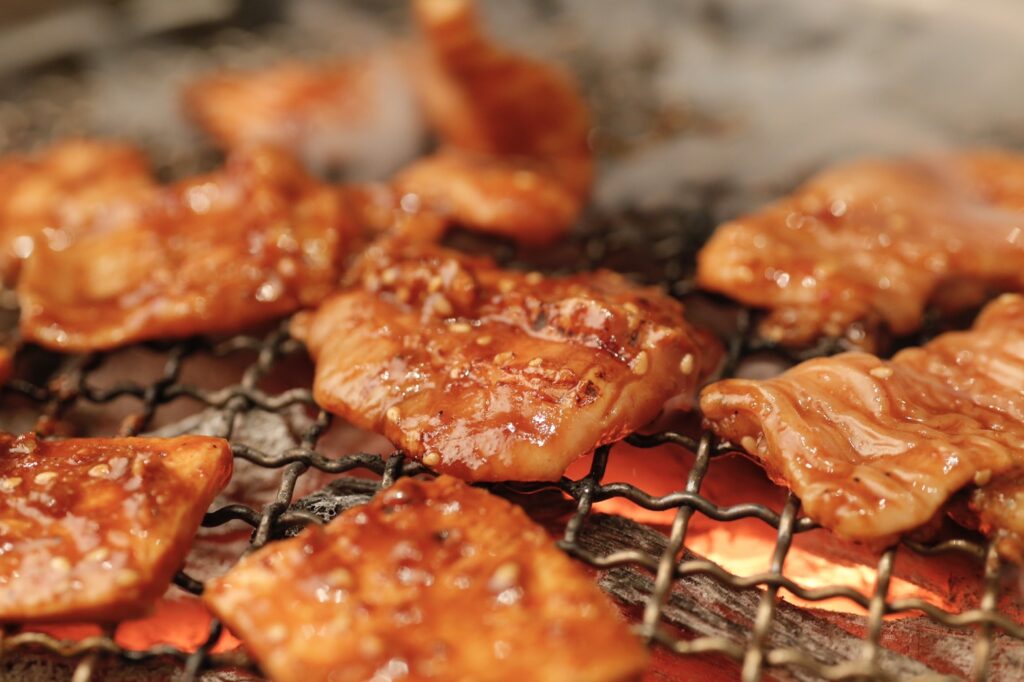
When choosing a yakiniku restaurant in Japan, don’t just focus on the meat — pay attention to the fire, the roaster system, and the way it’s grilled. At KURO5, these elements come together to create an unforgettable dining experience that balances authenticity, flavor, and comfort in perfect harmony.
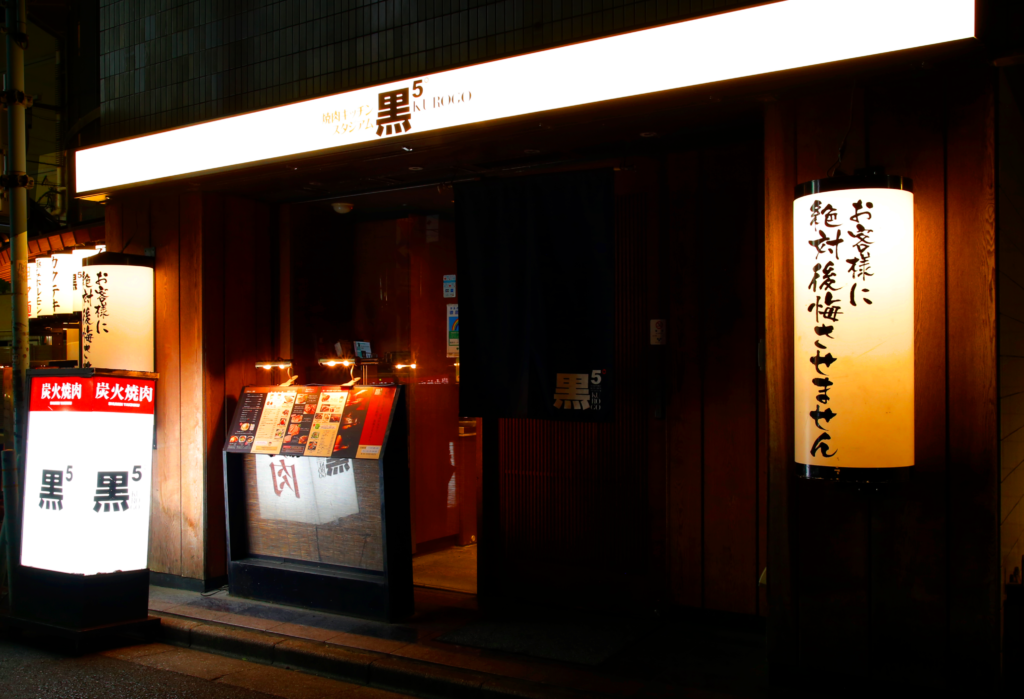
Wagyu Yakiniku Kuro5
IKEBUKURO Main Restrant
1F Shima 100 building ,2-46-3, Ikebukuro, Toshima-ku , Tokyo 171-0014
https://en.kuro5.net/restaurant/honten
Wagyu Yakiniku Kuro5
IKEBUKURO East Exit Restrant
2F Need Building, 1-42-16 Higashi-Ikebukuro, Toshima-ku, Tokyo 170-0013
https://en.kuro5.net/restaurant/higashiguchi
Wagyu Yakiniku KURO5
Kabukicho
1F Sankei Building, 2-21-4 Kabukicho, Shinjuku-ku, Tokyo
https://en.kuro5.net/restaurant/kabukicho
Official Instagram: @kuro5yakiniku
